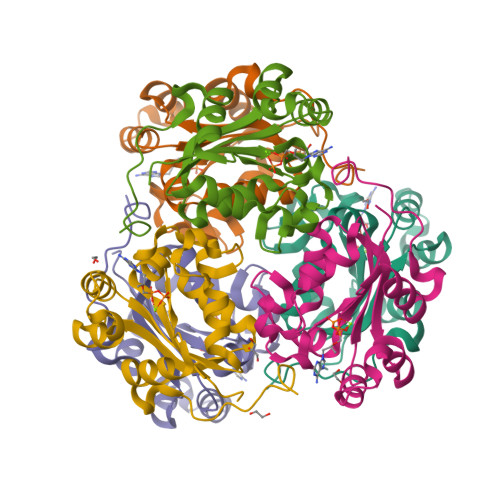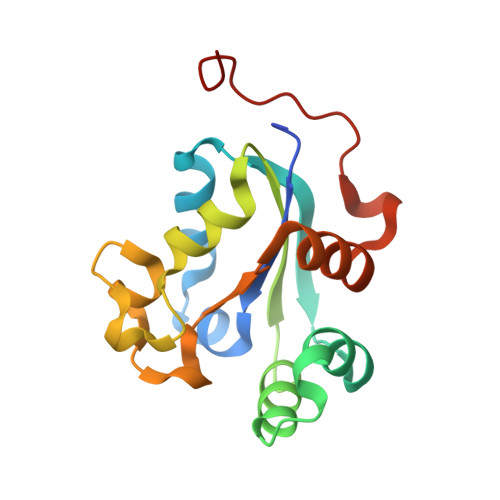Nucleoside diphosphate kinase and the activation of antiviral phosphonate analogs of nucleotides: binding mode and phosphorylation of tenofovir derivatives
Koch, K., Chen, Y.X., Feng, J.Y., Borroto-Esoda, K., Deville-Bonne, D., Gallois-Montbrun, S., Janin, J., Morera, S.(2009) Nucleosides Nucleotides Nucleic Acids 28: 776-792
- PubMed: 20183617
- DOI: https://doi.org/10.1080/15257770903155899
- Primary Citation of Related Structures:
3FKB - PubMed Abstract:
Tenofovir is an acyclic phosphonate analog of deoxyadenylate used in AIDS and hepatitis B therapy. We find that tenofovir diphosphate, its active form, can be produced by human nucleoside diphosphate kinase (NDPK), but with low efficiency, and that creatine kinase is significantly more active. The 1.65 A x-ray structure of NDPK in complex with tenofovir mono- and diphosphate shows that the analogs bind at the same site as natural nucleotides, but in a different conformation, and make only a subset of the Van der Waals and polar interactions made by natural substrates, consistent with their comparatively low affinity for the enzyme.
Organizational Affiliation:
Yeast Structural Genomics, IBBMC UMR 8619 CNRS, Universite Paris-Sud, Orsay, France.























